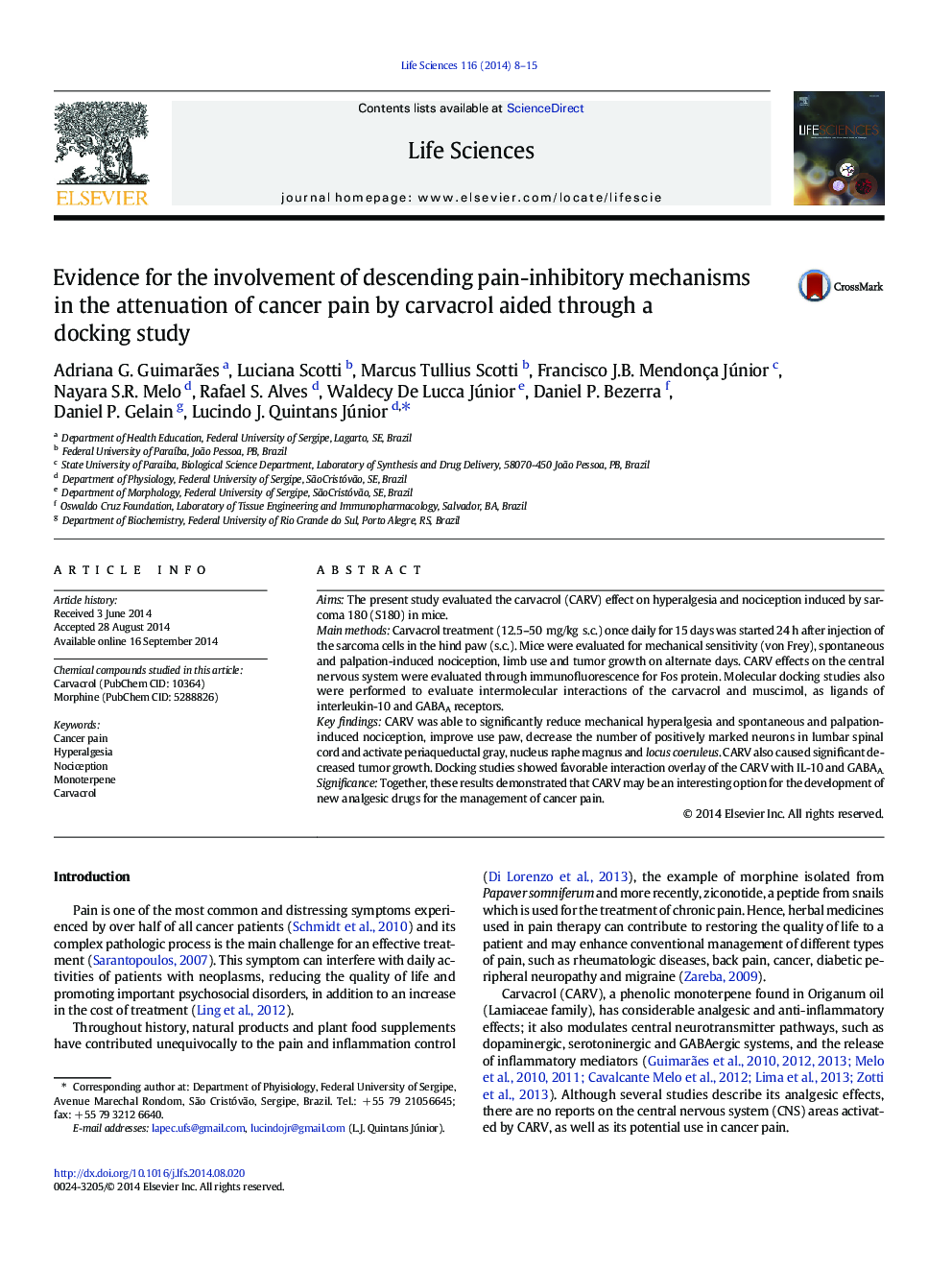| Article ID | Journal | Published Year | Pages | File Type |
|---|---|---|---|---|
| 2551006 | Life Sciences | 2014 | 8 Pages |
AimsThe present study evaluated the carvacrol (CARV) effect on hyperalgesia and nociception induced by sarcoma 180 (S180) in mice.Main methodsCarvacrol treatment (12.5–50 mg/kg s.c.) once daily for 15 days was started 24 h after injection of the sarcoma cells in the hind paw (s.c.). Mice were evaluated for mechanical sensitivity (von Frey), spontaneous and palpation-induced nociception, limb use and tumor growth on alternate days. CARV effects on the central nervous system were evaluated through immunofluorescence for Fos protein. Molecular docking studies also were performed to evaluate intermolecular interactions of the carvacrol and muscimol, as ligands of interleukin-10 and GABAA receptors.Key findingsCARV was able to significantly reduce mechanical hyperalgesia and spontaneous and palpation-induced nociception, improve use paw, decrease the number of positively marked neurons in lumbar spinal cord and activate periaqueductal gray, nucleus raphe magnus and locus coeruleus. CARV also caused significant decreased tumor growth. Docking studies showed favorable interaction overlay of the CARV with IL-10 and GABAA.SignificanceTogether, these results demonstrated that CARV may be an interesting option for the development of new analgesic drugs for the management of cancer pain.
Graphical abstractFigure optionsDownload full-size imageDownload high-quality image (92 K)Download as PowerPoint slide
